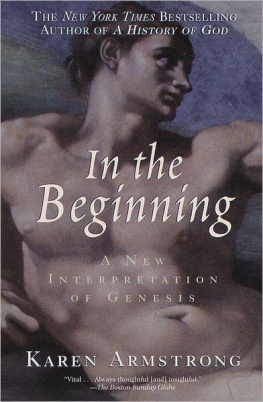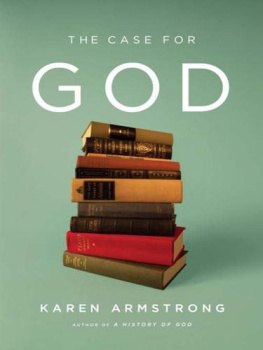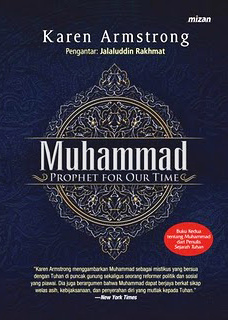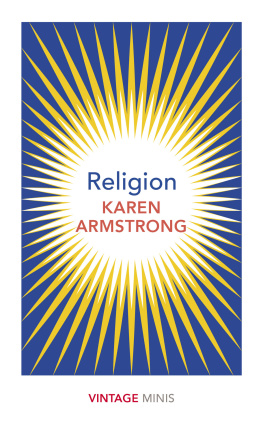Karen Armstrong - Buddha
Here you can read online Karen Armstrong - Buddha full text of the book (entire story) in english for free. Download pdf and epub, get meaning, cover and reviews about this ebook. genre: Religion. Description of the work, (preface) as well as reviews are available. Best literature library LitArk.com created for fans of good reading and offers a wide selection of genres:
Romance novel
Science fiction
Adventure
Detective
Science
History
Home and family
Prose
Art
Politics
Computer
Non-fiction
Religion
Business
Children
Humor
Choose a favorite category and find really read worthwhile books. Enjoy immersion in the world of imagination, feel the emotions of the characters or learn something new for yourself, make an fascinating discovery.

- Book:Buddha
- Author:
- Genre:
- Rating:4 / 5
- Favourites:Add to favourites
- Your mark:
- 80
- 1
- 2
- 3
- 4
- 5
Buddha: summary, description and annotation
We offer to read an annotation, description, summary or preface (depends on what the author of the book "Buddha" wrote himself). If you haven't found the necessary information about the book — write in the comments, we will try to find it.
Buddha — read online for free the complete book (whole text) full work
Below is the text of the book, divided by pages. System saving the place of the last page read, allows you to conveniently read the book "Buddha" online for free, without having to search again every time where you left off. Put a bookmark, and you can go to the page where you finished reading at any time.
Font size:
Interval:
Bookmark:
Annotation
Books on Buddhism may overflow the shelves, but the life story of the Buddha himself has remained obscure despite over 2,500 years of influence on millions of people around the world. In an attempt to rectify this, and to make the Buddha and Buddhism accessible to Westerners, the beloved scholar and author of such sweeping religious studies as A History of God has written a readable, sophisticated, and somewhat unconventional biography of one of the most influential people of all time. Buddha himself fought against the cult of personality, and the Buddhist scriptures were faithful, giving few details of his life and personality. Karen Armstrong mines these early scriptures, as well as later biographies, then fleshes the story out with an explanation of the cultural landscape of the 6th century B.C., creating a deft blend of biography, history, philosophy, and mythology.
At the age of 29, Siddhartha Gautama walked away from the insulated pleasure palace that had been his home and joined a growing force of wandering monks searching for spiritual enlightenment during an age of upheaval. Armstrong traces Gautama's journey through yoga and asceticism and grounds it in the varied religious teachings of the time. In many parts of the world during this so-called axial age, new religions were developing as a response to growing urbanization and market forces. Yet each shared a common impulse-they placed faith increasingly on the individual who was to seek inner depth rather than magical control. Taoism and Confucianism, Hinduism, monotheism in the Middle East and Iran, and Greek rationalism were all emerging as Gautama made his determined way towards enlightenment under the boddhi tree and during the next 45 years that he spent teaching along the banks of the Ganges. Armstrong, in her intelligent and clarifying style, is quick to point out the Buddha's relevance to our own time of transition, struggle, and spiritual void in both his approach-which was based on skepticism and empiricism-and his teachings.
Despite the lack of typical historical documentation, Armstrong has written a rich and revealing description of both a unique time in history and an unusual man. Buddha is a terrific primer for those interested in the origins and fundamentals of Buddhism.

Some Buddhists might say that to write a biography of Siddhatta Gotama is a very un-Buddhist thing to do. In their view, no authority should be revered, however august; Buddhists must motivate themselves and rely on their own efforts, not on a charismatic leader. One ninth-century master, who founded the Lin-Chi line of Zen Buddhism, even went so far as to command his disciples, If you meet the Buddha, kill the Buddha! to emphasize the importance of maintaining this independence from authority figures. Gotama might not have approved of the violence of this sentiment, but throughout his life he fought against the cult of personality, and endlessly deflected the attention of his disciples from himself. It was not his life and personality but his teaching that was important. He believed that he had woken up to a truth that was inscribed in the deepest structure of existence. It was a dhamma; the word has a wide range of connotations, but originally it denoted a fundamental law of life for gods, humans and animals alike. By discovering this truth, he had become enlightened and had experienced a profound inner transformation; he had won peace and immunity in the midst of lifes suffering. Gotama had thus become a Buddha, an Enlightened or Awakened One. Any one of his disciples could achieve the same enlightenment if he or she followed this method. But if people started to revere Gotama the man, they would distract themselves from their task, and the cult could become a prop, causing an unworthy dependence that could only impede spiritual progress.
The Buddhist scriptures are faithful to this spirit and seem to tell us little about the details of Gotamas life and personality. It is obviously difficult, therefore, to write a biography of the Buddha that will meet modern criteria, because we have very little information that can be considered historically sound. The first external evidence that a religion called Buddhism existed comes from inscriptions made by King Asoka, who ruled the Mauryan state in North India from about 269 to 232 b.c.e. But he lived some two hundred years after the Buddha. As a result of this dearth of reliable fact, some Western scholars in the nineteenth century doubted that Gotama had been a historical figure. They claimed that he had simply been a personification of the prevailing Samkhya philosophy or a symbol of a solar cult. Yet modern scholarship has retreated from this skeptical position, and argues that even though little in the Buddhist scriptures is what is popularly known as gospel truth, we can be reasonably confident that Siddhatta Gotama did indeed exist and that his disciples preserved the memory of his life and teachings as well as they could.
When trying to find out about the Buddha, we are dependent upon the voluminous Buddhist scriptures, which have been written in various Asian languages and take up several shelves in a library. Not surprisingly, the story of the composition of this large body of texts is complex and the status of its various parts much disputed. It is generally agreed that the most useful texts are those written in Pali, a north Indian dialect of uncertain provenance, which seems to have been close to Magadhan, the language that Gotama himself may have spoken. These scriptures were preserved by Buddhists in Sri Lanka, Burma and Thailand who belonged to the Theravada school. But writing was not common in India until the time of Asoka, and the Pali Canon was orally preserved and probably not written down until the first century b.c.e. How were these scriptures composed?
It seems that the process of preserving the traditions about the Buddhas life and teaching began shortly after his death in 483 (according to the traditional Western dating). Buddhist monks at this time led itinerant lives; they wandered around the cities and towns of the Ganges plain and taught the people their message of enlightenment and freedom from suffering. During the monsoon rains, however, they were forced off the road and congregated in their various settlements, and during these monsoon retreats, the monks discussed their doctrines and practices. Shortly after the Buddha died, the Pali texts tell us that the monks held a council to establish a means of assessing the various extant doctrines and practices. It seems that about fifty years later, some of the monks in the eastern regions of North India could still remember their great Teacher, and others started to collect their testimony in a more formal way. They could not yet write this down, but the practice of yoga had given many of them phenomenally good memories, so they developed ways of memorizing the discourses of the Buddha and the detailed rules of their Order. As the Buddha himself had probably done, they set some of his teachings in verses and may even have sung them; they also developed a formulaic and repetitive style (still present in the written texts) to help the monks learn these discourses by heart. They divided the sermons and regulations into distinct but overlapping bodies of material, and certain monks were assigned the task of committing one of these anthologies to memory and passing it on to the next generation.
About a hundred years after the Buddhas death, a Second Council was held, and by this time it seems that the texts had reached the form of the present Pali Canon. It is often called the Tipitaka (Three Baskets) because later, when the scriptures were written down, they were kept in three separate receptacles: the Basket of Discourses (
Next pageFont size:
Interval:
Bookmark:
Similar books «Buddha»
Look at similar books to Buddha. We have selected literature similar in name and meaning in the hope of providing readers with more options to find new, interesting, not yet read works.
Discussion, reviews of the book Buddha and just readers' own opinions. Leave your comments, write what you think about the work, its meaning or the main characters. Specify what exactly you liked and what you didn't like, and why you think so.










